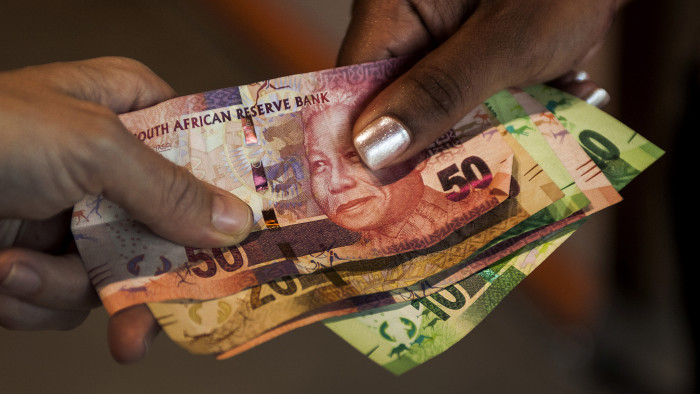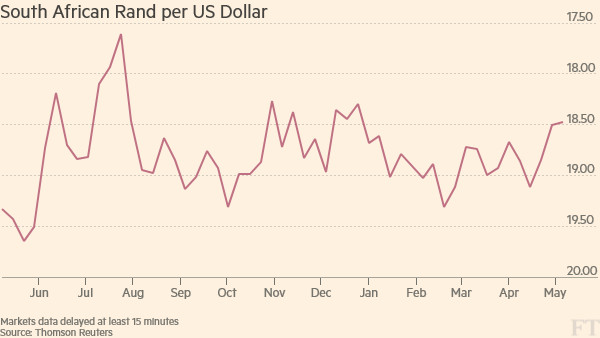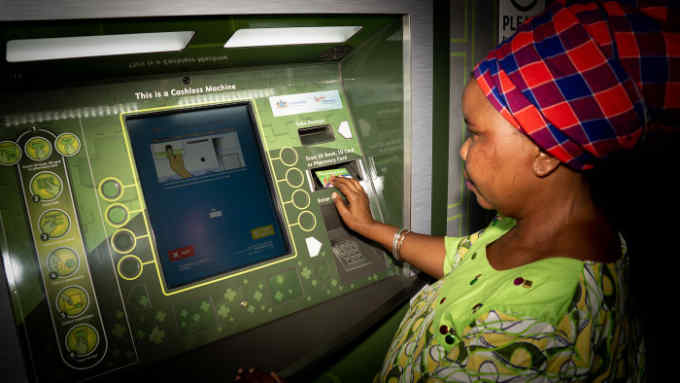South Africa digital newcomers take on established banks

Roula Khalaf, Editor of the FT, selects her favourite stories in this weekly newsletter.
Given the circumstances, Kamogelo has been doing remarkably well to sign up as many customers as he has for his gym in a shopping mall in the heart of Soweto, Johannesburg’s biggest township.
Standing at a kiosk in a purple T-shirt as Saturday shoppers mill around him, Kamogelo explains that there is no lack of demand to keep fit. Instead, interested punters often lack the basic financial wherewithal for a membership.
“It’s self-employed, self-employed, self-employed” — a euphemism for jobless or being in informal work — written on the application forms, Kamogelo says. “Debit cards, debit cards, debit cards.” Never “credit cards”.
Qualifying for mainstream bank credit is beyond the reach of many of Kamogelo’s customers, not least as they face a nationwide jobless rate of 27.5 per cent.
It also means a large section of the population is cut off from credit, even as South Africa otherwise scores highly on financial inclusion compared with other countries on its continent.
About four in five South Africans have a bank account, after heavy promotion of basic low-cost versions in recent years. Many of the poorest South Africans — in particular, those lacking access to jobs — also have a stake in the financial system via prepaid cards for distributing 17m monthly social security grants.
But that does not mean they have efficient or economical access to banking services. It is easy to spot when payday has arrived in South Africa by the long queues outside bank branches to withdraw money as soon as it is deposited.
Established South African banks generally charge fees that are high compared with other emerging markets, regulators and analysts say. Other services are also expensive.
South Africa is the costliest country in the G20 from which to send remittances, at about 15 per cent of transactions, according to a World Bank paper published last year.
Now, a number of digital upstarts are looking to overhaul this fee-ridden system. Last year South Africa’s Reserve Bank issued some of its first new banking licences in decades to several newcomers, hoping to challenge the dominance of the country’s biggest financial institutions.
The mobile-first TymeBank, backed by Patrice Motsepe, one of the richest men in South Africa, has already soft-launched. Bank Zero, another branchless bank promising competitive fees, expects to launch this year.
Discovery, an insurer, will also launch what its chief executive Adrian Gore calls the “world’s first behavioural bank”, which will seek to encourage financially healthier decision-making via an app.
“The traditional banks are strong, they’re excellent, they’re well-run. But they’re all silo-based, and they are very focused on transactions,” Mr Gore said as he detailed plans for Discovery Bank last year. The new unit will not be just another “fintech” but will represent a “third way that is based on behavioural change”, he added.
Discovery is already seen as a pioneer in South Africa with its Vitality points health reward scheme — a model for the bank. Mr Gore says the bank is targeting the “mass affluent and down” — Discovery has about 2m customers across its operations already, as well as 300,000 holders of its credit cards.
However, digital upstarts still have far to go to remedy the paradox of there being more South Africans borrowing money than holding jobs, according to the national credit regulator.

The statistic probably reflects social-grant recipients using their cards to borrow from micro-lenders outside the banking system, says Lesetja Kganyago, the Reserve Bank’s governor. “It is a concern as a social issue” even if underground lending is unlikely to affect wider financial stability, he adds.
To obtain the loans, borrowers typically hand over their welfare cards as collateral so that these underground lenders can withdraw monthly grants themselves and deduct their repayment.
This is illegal, yet in several Soweto neighbourhoods, those involved on both sides of the agreement describe it as necessary for families to get by. Borrowers often go to lenders for as little as R200 ($14.50), tapping, for example, child benefit of R400.
“Banks don’t lend to people that are unemployed . . . you’re desperate, at the end of the day,” says one former borrower who became a lender, offering a rate of about 30 per cent, before giving that up, too.
“Not only was I taking bread out of kids’ mouths, it was becoming a hassle to get paid back,” she says, declining to be named. But she sees little innovation or inclusion coming to replace the practice. “It’s a vicious circle.”

Comments